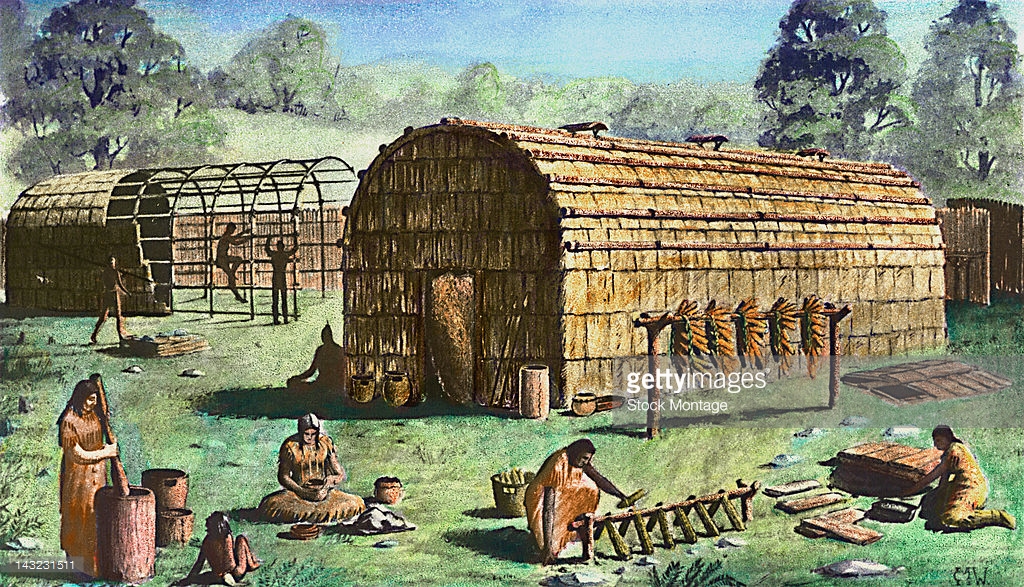
The Cayuga, known as ”the people at the landing” in reference to portaging a canoe, are a part of the Iroquois Confederacy (also known as the League of Five Nations and the League of Six Nations). The traditional homeland of the Cayuga was in the Finger Lakes region of New York. Among the Indian nations of the League of Five Nations, the Cayuga had the smallest territory, with the Seneca to their west and the Onondaga to their east. The Cayuga had thirteen main villages.
The most important feature of Iroquois life is the clan system. The clans are matrilineal, meaning that children belong to their mother’s clan. Among the Cayuga, the clans were associated with two moieties (a division of the tribe into two groups): Wolf and Turtle. The Heron, Wolf, Plover, and Snipe clans made up the Wolf Moiety. The Big Bear, Ball, Younger Bear, Suckling Bear, Deer, and Snapping Turtle clans made up the Turtle Moiety. Prior to the coming of the Europeans the moieties were exogamous; that is, a member of the Wolf Moiety could not marry another member of the Wolf Moiety. By the end of the nineteenth century, exogamy no longer applied to the moieties.
Cayuga moieties functioned to provide social and ceremonial equilibrium. Among the Cayuga, members of the same moiety refer to themselves as “brothers and sisters” ceremonially and they refer to the members of the other moiety as “cousins.”
Religious ceremonies are often carried out in a longhouse. Anthropologist Frank Speck, in his work on Cayuga ceremonialism (Midwinter Rites of the Cayuga Long House), writes:
“It should be understood that all the ceremonies discussed in this study are when occasion arises carried out in the Long House, which to the Cayuga ceremonialist is virtually a temple.”
There are two doors and two fires in the longhouse, which are associated with east and west.
In Cayuga ceremonies, members of the Wolf Moiety enter the longhouse through the west door (known as the Wolf Door) and the members of the Turtle Moiety enter through the east door (known as the Turtle Door). For most of the ceremonies there are formal seating arrangements which call for the men and women to sit opposite each other. Men sit to the east and women sit to the west.
The Cayuga ceremonial year was traditionally divided into periods of male control and female control. The winter ceremonies are sponsored by the men. On the last day of the Midwinter ceremonies, the chiefs formally transfer sponsorship to the women. The women then sponsor the ceremonies in the longhouse until the corn has matured in August. At this time, they formally turn their duties over to the men.
The Cayuga use a number of different musical instruments during their longhouse ceremonies. These include turtle rattles (made from snapping turtles, box turtles, and mud turtles), horn rattles, bark rattles, gourd rattles, wood beaters, rasps, water drums, deer-hoof rattles.
Briefly described below are some of the Cayuga ceremonies. While some of the ceremonies may not be currently performed, they are described as they were performed.
Feather Dance:
The Feather Dance is one of the four “Sacred Words” of the Cayuga and is performed soon after sunrise on the sixth day of the Midwinter Ceremony. While everyone is called on to participate, the men wear feather headdresses. The feathers of the Blue Heron are often preferred because of its prayerful attitude. The men also wear face paint: two horizontal stripes on each cheek.
Burning Tobacco Ceremony:
The Burning Tobacco Ceremony is performed on the seventh day of the Midwinter Ceremony. Tobacco is a helper which assists the people in communicating to the spirit world. During a prayer – which is repeated five times – to the spirit forces above the earth, the Creator, the Four Angels, the Sun, the Moon, the Stars, and the Thunders, tobacco is thrown on the fire.
Sun Ceremony:
Among the Cayuga, the Sun Ceremony is carried out in the long house to thank the sun for warmth and the stimulation of plant growth. Each man has his own personal chants which are used in this ceremony. Each man holds a sun-symbol which is a wooden disk that has been painted with red and yellow symbols: a face on one side and rays on the other. Feathers are attached to the disk. The movement in this ceremony is counter clockwise.
Skin Dance:
The Skin Dance is another of the four Sacred Words of the Cayuga and is performed on the seventh day of the Midwinter Ceremony. Anthropologist Frank Speck writes:
“Before the time of Handsome Lake the purpose of the Skin Dance was to afford an opportunity for the war chiefs and warriors to recount their war records and to discuss raids and cruelties inflicted upon other tribes.”
This was condemned by Handsome Lake, the early nineteenth century prophet, who taught that only the wonders of creation should be spoken at this ceremony.
Bowl Game:
The Bowl Game is another of the four Sacred Words of the Cayuga which is performed twice a year. It may also be conducted as a healing rite. The ceremony involves two players, one from each moiety. Six dice – peach pits which are burned black on one side – are placed in a large bowl. The dice are shaken in the bowl and then counted. The game continues until one side has accumulated 101 points.
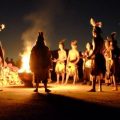
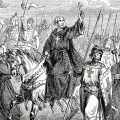
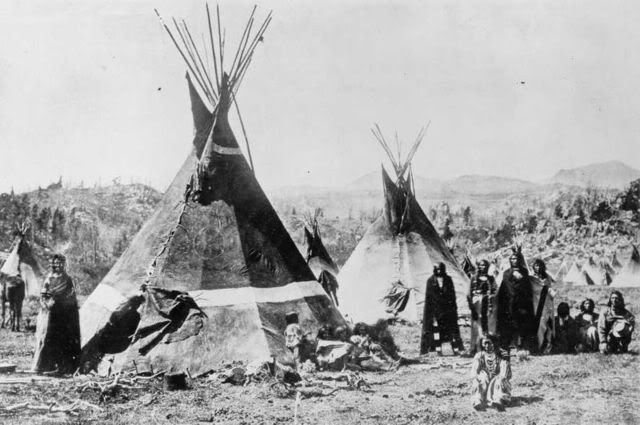
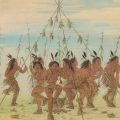
Leave a Reply